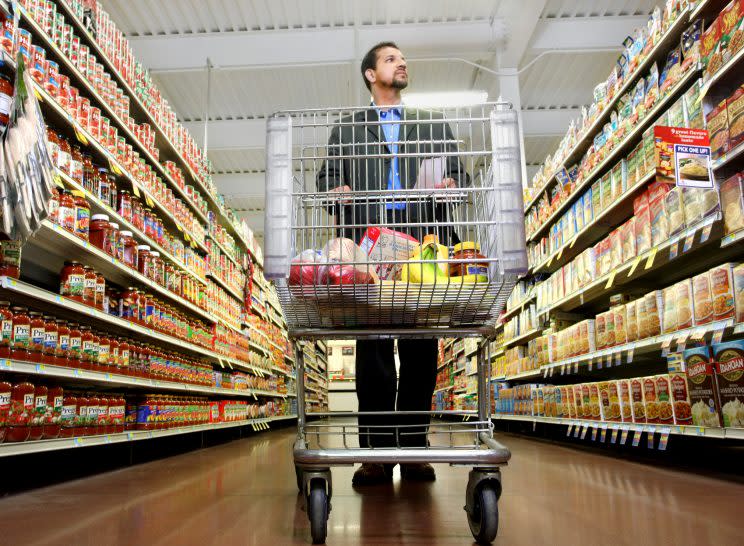Canadians are adjusting their food diets to match prices

Canadians are becoming more conscious of food prices, seeking out alternatives and stocking up on sale items, but only a small percentage are taking the time to make a budget before they go grocery shopping, according to a study released by researchers at Dalhousie University in Halifax.
The survey of 1,000 Canadians conducted in October, found that while 91.5 per cent of us make a shopping list and 53.7 per cent go to the trouble of finding out what stores have the best deals and shopping there, only 15.9 per cent actually set a budget for shopping trips.
“There’s a bit of a paradox, you seem to be dealing with way more Canadians becoming conscious about prices but nobody is actually making a budget,” Dr. Sylvain Charlebois, the lead researcher on the study, dean of the faculty of management and a professor in food distribution and policy at Dalhousie University, told Yahoo Canada Finance.
He points out that 20 years ago, nobody really looked at prices but the surge in attention to what consumers are paying at the till could promote an upswing in grocery store budgeting.
“There’s so many options out there to easily get confused so instead of just committing to a list of groceries without a price, people will actually care about how much they spend at the cashier,” says Charlebois.
British Columbia stood out as the most prominent region when it came to swapping shopping routines to counter fluctuating food prices with 57 per cent saying they’ve changed habits. Quebec followed at 55.2 per cent while Ontario was in third at 52.8 per cent adjusting their habits.
“B.C.’s response (to fluctuating food prices) is very different, they actually will buy more food on sale then they actually need, they’ll look for more alternatives as well… they’re not as committed to their diets as they used to be,” he says.
Quebec and Ontario both rely heavily on flyers, at 62.6 and 58.8 per cent respectively, to keep their food costs in check.
“Which is again very surprising, I couldn’t believe that flyers are so popular,” says Charlebois, especially when “there are apps and different tech tools you can use to get more educated about prices in general.”
Results from Atlantic Canada and the Prairies showed they were both committed to their diets despite the fluctuation of food prices over the past year.
“Historically, people in the Atlantic may have been penny pinchers but it seems as though central Canada has been more concerned about food prices than consumers in other parts of the country,” says Charlebois. Part of that comes from aggressive growth strategies by superstores like Walmart and CostCo which have broadened their footprints in B.C., Quebec and Ontario.
But going forward, grocers can expect a more informed consumer, says the study’s author.
“Particularly in Quebec and Ontario (where) more consumers are in self defense mode,” he says. “Instead of just relying on sales being offered to them in store they actually want to validate whether or not sales are actually sales.”
Canadians, say Charlebois, aren’t the “gullible” consumers grocer sometimes assume they are.
“They’re going to be dealing with a much more educated, intelligent, well-informed consumer,” says Charlebois.

 Yahoo Finance
Yahoo Finance 